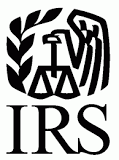The IRS has issued final regulations updating the section 401(k) and (m) regulations to reflect numerous statutory changes to the hardship distribution provisions under the Code.
Summary of Statutory Changes
Section 41113 of the Bipartisan Budget Act of 2018 directs the Secretary of the Treasury to modify § 1.401(k)-1(d)(3)(iv)(E) to (1) delete the 6-month prohibition on contributions following a hardship distribution and (2) make any other modifications necessary to carry out the purposes of section 401(k)(2)(B)(i)(IV).
Section 41114 of BBA 2018 modified the hardship distribution rules under section 401(k)(2)(B) by adding section 401(k)(14)(A) to the Code, which states that the maximum amount available for distribution upon hardship includes (1) contributions to a profit-sharing or stock bonus plan to which section 402(e)(3) applies, (2) QNECs, (3) QMACs, and (4) earnings on these contributions.
Section 41114 of BBA 2018 also added section 401(k)(14)(B) to the Code, which provides that a distribution is not treated as failing to be made upon the hardship of an employee solely because the employee does not take any available loan under the plan.
Section 11044 of the Tax Cuts and Jobs Act (TCJA), added section 165(h)(5) to the Code. Section 165(h)(5) provides that, for taxable years 2018 through 2025, the deduction for a personal casualty loss generally is available only to the extent the loss is attributable to a federally declared disaster (as defined in section 165(i)(5)).
Section 826 of the Pension Protection Act of 2006 (PPA ’06), directs the Secretary of the Treasury to modify the rules relating to hardship distributions to permit a section 401(k) plan to treat a participant’s beneficiary under the plan the same as the participant’s spouse or dependent in determining whether the participant has incurred a hardship. Notice 2007-7, 2007-5 I.R.B. 395, provides guidance for applying this provision.
Section 827(a) of PPA ’06 added to the Code section 72(t)(2)(G), which exempts certain distributions from the application of the section 72(t) additional income tax on early distributions. These distributions, made during the period that a reservist has been called to active duty, are referred to as “qualified reservist distributions,” and could include distributions attributable to elective contributions. Section 827(b)(1) of PPA ’06 added section 401(k)(2)(B)(i)(V) to the Code, which permits qualified reservist distributions to be made from a section 401(k) plan.
Section 105(b)(1)(A) of the Heroes Earnings Assistance and Relief Tax Act of 2008 (HEART Act), added section 414(u)(12) to the Code. Section 414(u)(12)(B)(ii) provides for a 6-month suspension of elective contributions and employee contributions after certain distributions to individuals performing service in the uniformed services.
Overview of the Regulatory Changes
Deemed Immediate and Heavy Financial Need
The final regulations modify the safe harbor list of expenses in existing § 1.401(k)-1(d)(3)(iii)(B) for which distributions are deemed to be made on account of an immediate and heavy financial need by:
(1) Adding “primary beneficiary under the plan” as an individual for whom qualifying medical, educational, and funeral expenses may be incurred;
(2) modifying the expense listed in existing § 1.401(k)-1(d)(3)(iii)(B)(6) (relating to damage to a principal residence that would qualify for a casualty deduction under section 165) to provide that for this purpose the limitations in section 165(h)(5) (added by section 11044 of the TCJA) do not apply; and
(3) adding a new type of expense to the list, relating to expenses incurred as a result of certain disasters.
Distribution Necessary To Satisfy Financial Need
Pursuant to sections 41113 and 41114 of BBA 2018, the final regulations modify the rules for determining whether a distribution is necessary to satisfy an immediate and heavy financial need by eliminating:
(1) any requirement that an employee be prohibited from making elective contributions and employee contributions after receipt of a hardship distribution and
(2) any requirement to take plan loans prior to obtaining a hardship distribution. In particular, the final regulations eliminate the safe harbor in existing § 1.401(k)-1(d)(3)(iv)(E), under which a distribution is deemed necessary to satisfy the financial need only if elective contributions and employee contributions are suspended for at least 6 months after a hardship distribution is made and, if available, nontaxable plan loans are taken before the hardship distribution is made.
The final regulations eliminate the rules in existing § 1.401(k)-1(d)(3)(iv)(B) (under which the determination of whether a distribution is necessary to satisfy a financial need is based on all the relevant facts and circumstances) and provide one general standard for determining whether a distribution is necessary.
Under this general standard, a hardship distribution may not exceed the amount of an employee’s need (including any amounts necessary to pay any federal, state, or local income taxes or penalties reasonably anticipated to result from the distribution), the employee must have obtained other available, non-hardship distributions under the employer’s plans, and the employee must provide a representation that he or she has insufficient cash or other liquid assets available to satisfy the financial need. A hardship distribution may not be made if the plan administrator has actual knowledge that is contrary to the representation.
The final regulations also provide that a plan generally may provide for additional conditions, such as those described in 26 CFR 1.401(k)-1(d)(3)(iv)(B) and (C) (revised as of April 1, 2019), to demonstrate that a distribution is necessary to satisfy an immediate and heavy financial need of an employee. However, the final regulations do not permit a plan to provide for a suspension of elective contributions or employee contributions as a condition of obtaining a hardship distribution.
Expanded Sources for Hardship Distributions
Pursuant to section 41114 of BBA 2018, the final regulations modify existing § 1.401(k)-1(d)(3) to permit hardship distributions from section 401(k) plans of elective contributions, QNECs, QMACs, and earnings on these amounts, regardless of when contributed or earned.
Section 403(b) Plans
Section 1.403(b)-6(d)(2) provides that a hardship distribution of section 403(b) elective deferrals is subject to the rules and restrictions set forth in § 1.401(k)-1(d)(3); accordingly, the new rules relating to a hardship distribution of elective contributions from a section 401(k) plan generally apply to section 403(b) plans.
However, because Code section 403(b)(11) was not amended by section 41114 of BBA 2018, income attributable to section 403(b) elective deferrals continues to be ineligible for distribution on account of hardship.
In addition, amounts attributable to QNECs and QMACs may be distributed from a section 403(b) plan on account of hardship only to the extent that, under § 1.403(b)-6(b) and (c), hardship is a permitted distributable event for amounts that are not attributable to section 403(b) elective deferrals. Thus, QNECs and QMACs in a section 403(b) plan that are not in a custodial account may be distributed on account of hardship, but QNECs and QMACs in a section 403(b) plan that are in a custodial account continue to be ineligible for distribution on account of hardship.
Applicability Dates
The changes to the hardship distribution rules made by BBA 2018 are effective for plan years beginning after December 31, 2018. The final regulations provide plan sponsors with a number of applicability-date options.
The final regulations provide that § 1.401(k)-1(d)(3) applies to distributions made on or after January 1, 2020 (rather than, as in the proposed regulations, to distributions made in plan years beginning after December 31, 2018).
However, § 1.401(k)-1(d)(3) may be applied to distributions made in plan years beginning after December 31, 2018, and the prohibition on suspending an employee’s elective contributions and employee contributions as a condition of obtaining a hardship distribution may be applied as of the first day of the first plan year beginning after December 31, 2018, even if the distribution was made in the prior plan year.
Thus, for example, a calendar-year plan that provides for hardship distributions under the pre-2019 safe harbor standards may be amended to provide that an employee who receives a hardship distribution in the second half of the 2018 plan year will be prohibited from making contributions only until January 1, 2019 (or may continue to provide that contributions will be suspended for the originally scheduled 6 months).
If the choice is made to apply § 1.401(k)-1(d)(3) to distributions made before January 1, 2020, the new rules requiring an employee representation and prohibiting a suspension of contributions may be disregarded with respect to those distributions. To the extent early application of § 1.401(k)-1(d)(3) is not chosen, the rules in § 1.401(k)-1(d)(3), prior to amendment by this Treasury decision, apply to distributions made before January 1, 2020, taking into account statutory changes effective before 2020 that are not reflected in that regulation.
In addition, the revised list of safe harbor expenses may be applied to distributions made on or after a date that is as early as January 1, 2018. Thus, for example, a plan that made hardship distributions relating to casualty losses deductible under section 165 without regard to the changes made to section 165 by the TCJA (which, effective in 2018, require that, to be deductible, losses must result from a federally declared disaster) may be amended to apply the revised safe harbor expense relating to casualty losses to distributions made in 2018, so that plan provisions will conform to the plan’s operation.
Similarly, a plan may be amended to apply the revised safe harbor expense relating to losses (including loss of income) incurred by an employee on account of a disaster that occurred in 2018, provided that the employee’s principal residence or principal place of employment at the time of the disaster was located in an area designated by the Federal Emergency Management Agency for individual assistance with respect to the disaster.
Plan Amendments
The Treasury Department and IRS expect that plan sponsors will need to amend their plans’ hardship distribution provisions to reflect the final regulations, and any such amendment must be effective for distributions beginning no later than January 1, 2020.
The deadline for amending a disqualifying provision is set forth in Rev. Proc. 2016-37, 2016-29 I.R.B. 136. For example, with respect to an individually designed plan that is not a governmental plan, the deadline for amending the plan to reflect a change in qualification requirements is the end of the second calendar year that begins after the issuance of the Required Amendments List (RAL) described in section 9 of Rev. Proc. 2016-37 that includes the change; if the final regulations are included in the 2019 RAL, the deadline will be December 31, 2021.
A plan provision that does not result in the failure of the plan to satisfy the qualification requirements, but is integrally related to a qualification requirement that has been changed in a manner that requires the plan to be amended, may be amended by the same deadline that applies to the required amendment.
The Treasury Department and IRS have determined that a plan amendment modifying a plan’s hardship distribution provisions that is effective no later than the required amendment, including a plan amendment reflecting one or more of the following, will be treated as amending a provision that is integrally related to a qualification requirement that has been changed:
(1) The change to section 165 (relating to casualty losses);
(2) the addition of the new safe harbor expense (relating to expenses incurred as a result of certain federally declared disasters); and
(3) the extension of the relief under Announcement 2017-15, 2017-47 I.R.B. 534, to victims of Hurricanes Florence and Michael that was provided in the preamble to the proposed regulations.
Thus, in the case of an individually designed plan, the deadline for such an integrally related amendment will be the same as the deadline for the required amendment (described above), even if some of the amendment provisions have an earlier effective date.

